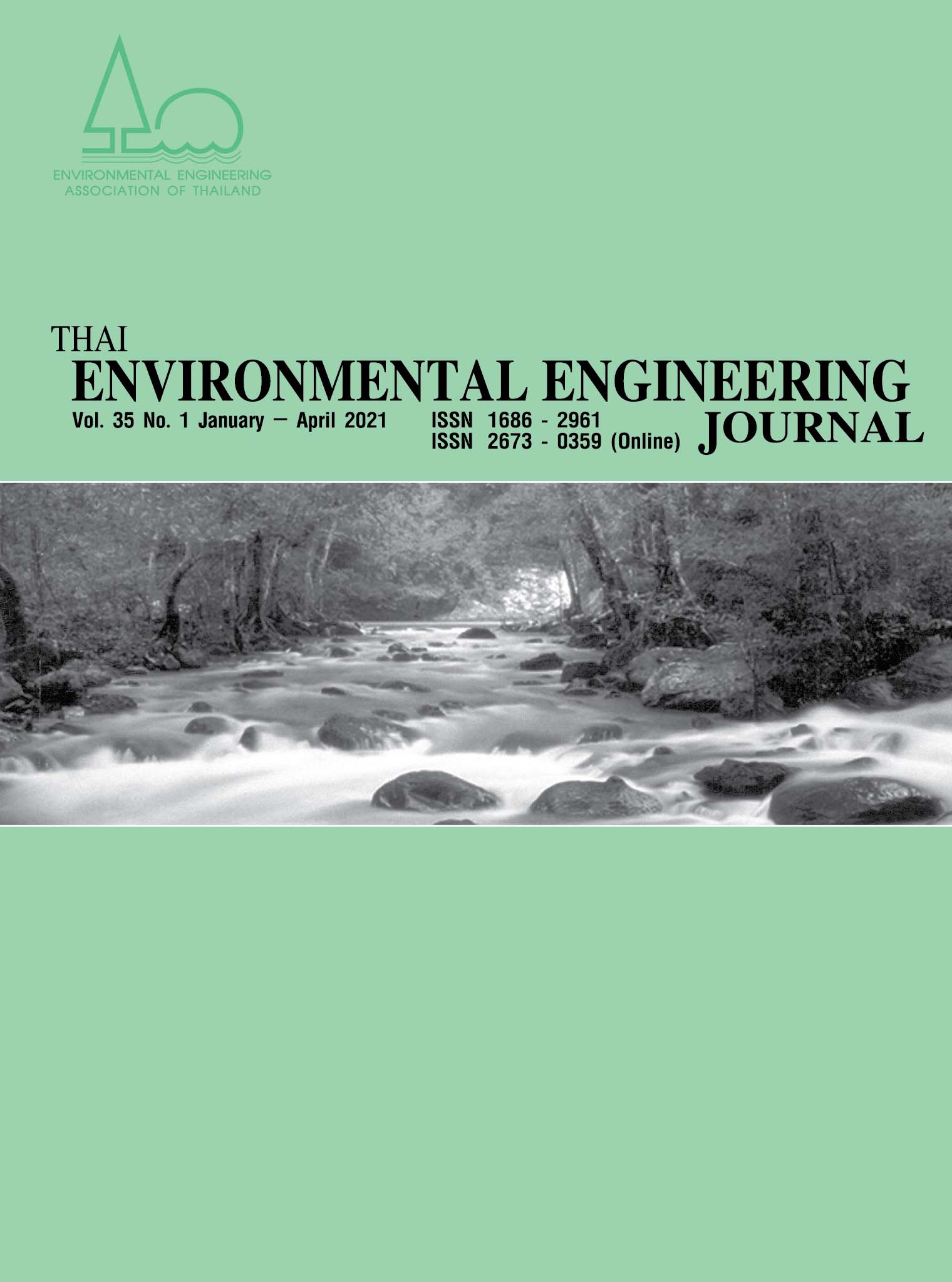Forecasting PM2.5 Concentrations Using Mathematical Models and Satellite Imagery to Find Guidelines for Setting Standards under the Environmental Law, In an Industrial Area in Samut Prakan Province
Main Article Content
Abstract
This study aims to forecast PM2.5 concentrations using mathematical models from satellite imagery of LANDSAT 8 at band 1-7 wavelengths and applied to a correlation analysis using the equation as 11 models with data from the five ground monitoring stations in Samut Prakan Province during October 2019 - April 2020. The results of this study indicated that the suitable equation model was Cubic (Y= b0+b1X+b2X2+b3X3) which had the highest R2 value of 0.959, and the Quadratic (Y= b0+b1X+b2X2) model had the highest R2 value of 0.98. Besides, it was found that the evaluation of accuracy or RMSE was as low as 0.39 of relationship with surface reflection data, and the lowest RMSE value was 0.90 of the relative optical thickness (AOT) data. Low RMSE value means high accuracy and precision of the PM2.5 predictive performance, which can be used to predict PM2.5 concentration through PM2.5 maps. It was found that during December 2019 and February 2020, there was a small amount of PM2.5 accumulated in the Bang Pu and Bang Phli industrial estates, which are industrial areas. Therefore, it could be concluded that satellite imagery could be used to analyze and determine the guidelines to solve the problems and to formulate standards in accordance with the environmental laws of PM2.5 emission from industrial areas.
Article Details
References
Apiwat Kamonrojpong (2017). Mapping particulate concentrations of PM10 in Bangkok with geospatial technology. Thesis. Bachelor of arts, Thammasat University.
Geospatial Engineering and Innovation Center, Institute of field robotics, King Mongkut's University of Technology Thonburi (2006). Air quality monitoring and surveillance project (Thai air quality situation assessment). Pollution Control Department.
Lili, Z., John, P.-W., Beau, M.-D., Wenhao, Z., and Tao, Y. (2020). The changing PM2.5 dynamics of global megacities based on long-term remotely sensed observations. Environment International, 142, 105862.
Seyed, O.-N., Leopold H. and Esmail A. (2019). Assessing PM2.5 concentrations in Tehran, Iran, from space using MAIAC, deep blue, and dark target AOD and machine learning algorithms. Atmospheric Pollution Research, 10, 889-903.
Tongwen L., Huanfeng S., Qiangqiang Y., Xuechen Z., and Liangpei Z. (2017). Estimating Ground-Level PM2.5 by Fusing Satellite and Station Observations: A Geo-Intelligent Deep Learning Approach. Geophysical Research Letters. 44, 11,985-11,993.
Nhu, H.-N., and Van, A.-T. (2014). Estimation of PM2.5 from AOT of satellite landsat8 image over Hanoi city. Hanoi university, Vietnam.


